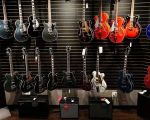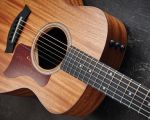How to Choose the Right Music Production Interface
When diving into the world of music production, one of the most essential tools you'll need is a quality music production interface. Whether you're just starting or you're a seasoned producer looking to upgrade your setup, choosing the right interface can make a world of difference in the quality of your recordings. With so many options on the market, it can be overwhelming to determine which one is best for your needs. In this article, I’ll walk you through the key factors to consider when selecting a music production interface, from sound quality to connectivity, and how to make the best choice based on your specific needs.
1. What is a Music Production Interface?
A music production interface, often referred to as an audio interface, is a device that connects your instruments or microphones to your computer. It acts as a bridge, converting analog signals (from instruments or vocals) into digital data that can be processed by your computer software. The interface also handles the reverse, sending processed digital sound to speakers or headphones. A high-quality interface ensures that your recordings sound as clean and professional as possible.
2. Key Features to Consider When Choosing a Music Production Interface
When looking for the best music production interface for your needs, there are several key factors to keep in mind:
- Sound Quality: The most important factor in any audio interface is its sound quality. Look for an interface with high-quality preamps, converters, and the ability to handle high-resolution recordings without distortion.
- Input and Output Options: Consider how many inputs and outputs you need. If you're planning on recording multiple instruments at once, you'll need an interface with several inputs. If you’re working with MIDI equipment, make sure your interface supports MIDI input and output as well.
- Connectivity: Interfaces typically connect to your computer via USB, Thunderbolt, or even Wi-Fi. USB interfaces are the most common, but Thunderbolt offers faster data transfer, which is ideal for larger sessions. Make sure the interface you choose is compatible with your computer's ports.
- Latency: Latency is the delay between when a sound is created and when you hear it. Look for an interface with low latency, as this will ensure that your recordings and performances are smooth and free from noticeable delays.
- Software Compatibility: Check whether the interface is compatible with your preferred DAW (Digital Audio Workstation) and any other music production software you plan on using. Many interfaces come with bundled software, which can be an added bonus for beginners.
3. Top-Rated Music Production Interfaces for Beginners and Pros
Here are a few highly recommended music production interfaces that cater to both beginners and professionals:
1. Focusrite Scarlett 2i2
Known for its excellent sound quality and ease of use, the Focusrite Scarlett 2i2 is a top choice for many beginners. It has two inputs, perfect for recording vocals and instruments simultaneously, and offers 24-bit/192kHz resolution. It’s affordable, durable, and works seamlessly with most DAWs. It also comes with a suite of software, making it an excellent value for beginners.
2. Universal Audio Apollo Twin X
For professional-level audio quality, the Universal Audio Apollo Twin X is a fantastic choice. It’s widely recognized for its superior preamps and its ability to record at a very high resolution. With Thunderbolt connectivity, it offers ultra-low latency and is perfect for anyone looking to record large, complex sessions with minimal delay. While it’s more expensive, its performance and sound quality make it a favorite among professionals.
3. PreSonus AudioBox USB 96
Another great option for beginners is the PreSonus AudioBox USB 96. It offers solid audio performance, especially for its price point, and includes a simple interface with two combo microphone/instrument inputs. It's great for podcasters and solo musicians who need a straightforward, affordable interface without sacrificing sound quality.
4. How to Match Your Music Production Interface to Your Needs
Choosing the right interface depends on your specific needs. Here are some questions to ask yourself:
- How many inputs do I need? If you're recording solo or with a single instrument, a simple two-input interface may suffice. However, if you're planning on recording a full band or multiple instruments simultaneously, you’ll need an interface with more inputs.
- What’s my budget? Prices for audio interfaces vary widely. Entry-level models can be as low as $100, while professional-level interfaces can run into the thousands. Determine your budget and choose an interface that fits within it while meeting your essential needs.
- What kind of sound quality am I looking for? If you're aiming for professional-level productions, prioritize high-resolution recording capabilities and quality preamps. If you're just starting out, a mid-range option will still offer great sound quality at a lower price.
- Will I be using MIDI? If you're using MIDI instruments or controllers, make sure the interface you choose supports MIDI connections.
5. Additional Features to Look For
Aside from the basic features, there are a few additional elements that can elevate your experience:
- Phantom Power: If you plan to use condenser microphones, you’ll need phantom power, which is supplied by most modern interfaces.
- Multiple Headphone Outputs: If you're working in a group or want to monitor with multiple people, having multiple headphone outputs can be very helpful.
- Portable Options: If you plan on recording on the go, look for a portable audio interface that’s compact and can easily fit into your setup without compromising on sound quality.
6. Conclusion: Find the Right Interface for Your Music Production Journey
Choosing the right music production interface is crucial for creating high-quality recordings and ensuring a smooth workflow in your studio. Whether you're a beginner or a professional, there’s an interface out there that meets your needs and budget. By considering factors like sound quality, connectivity, and the number of inputs, you can find an interface that enhances your creativity and makes music production an enjoyable experience.
If you’re looking for recommendations on the best music production tools or need help deciding on the perfect interface, visit Beat Trigger for expert advice and top-notch products.








